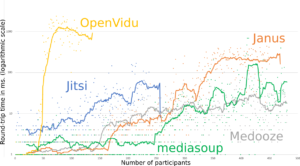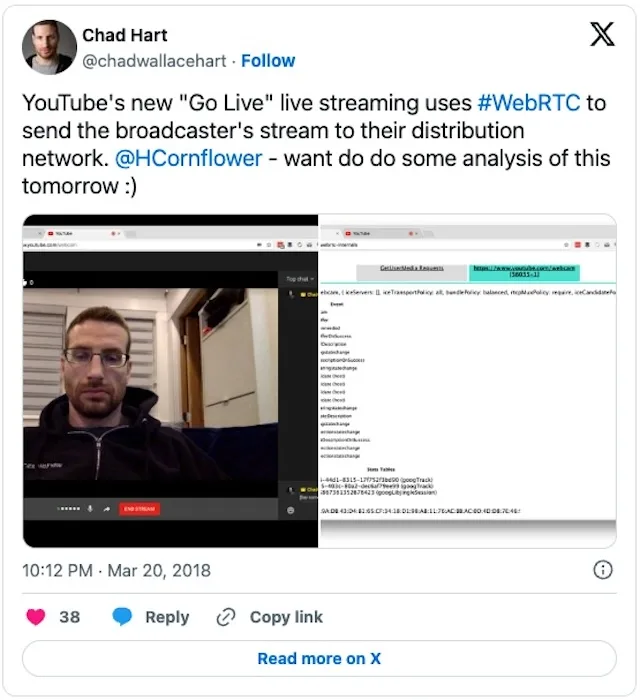When running WebRTC at scale, you end up hitting issues and frequent regressions. Being able to quickly identify what exactly broke is key to either preventing a regression from landing in Chrome Stable or adapting your own code to avoid the problem. Chrome’s bisect-builds.py tool makes this process much easier than you would suspect. Arne […]
Search Results for: simulcast
Improving Scale and Media Quality with Cascading SFUs (Boris Grozev)
Deploying media servers for WebRTC has two major challenges, scaling beyond a single server as well as optimizing the media latency for all users in the conference. While simple sharding approaches like “send all users in conference X to server Y” are easy to scale horizontally, they are far from optimal in terms of the […]
Breaking Point: WebRTC SFU Load Testing (Alex Gouaillard)
If you plan to have multiple participants in your WebRTC calls then you will probably end up using a Selective Forwarding Unit (SFU). Capacity planning for SFU’s can be difficult – there are estimates to be made for where they should be placed, how much bandwidth they will consume, and what kind of servers you […]
YouTube Does WebRTC – Here’s How
I logged into YouTube on Tuesday and noticed this new camera icon in the upper right corner, with a “Go Live (New)” option, so I clicked on it to try. It turns out you can now live stream directly from the browser. This smelled a lot like WebRTC, so I loaded up chrome://webrtc-internals to see […]
All I want for Christmas is Hangouts to use WebRTC on Firefox
As the year 2017 comes to an end, there was a small present. Hangouts started to support Firefox with WebRTC instead of rejecting access – plugin access had been unavailable since Firefox 53 removed NPAPI in April 2017. While it had been public for a while that the Firefox WebRTC team had been testing this, […]






